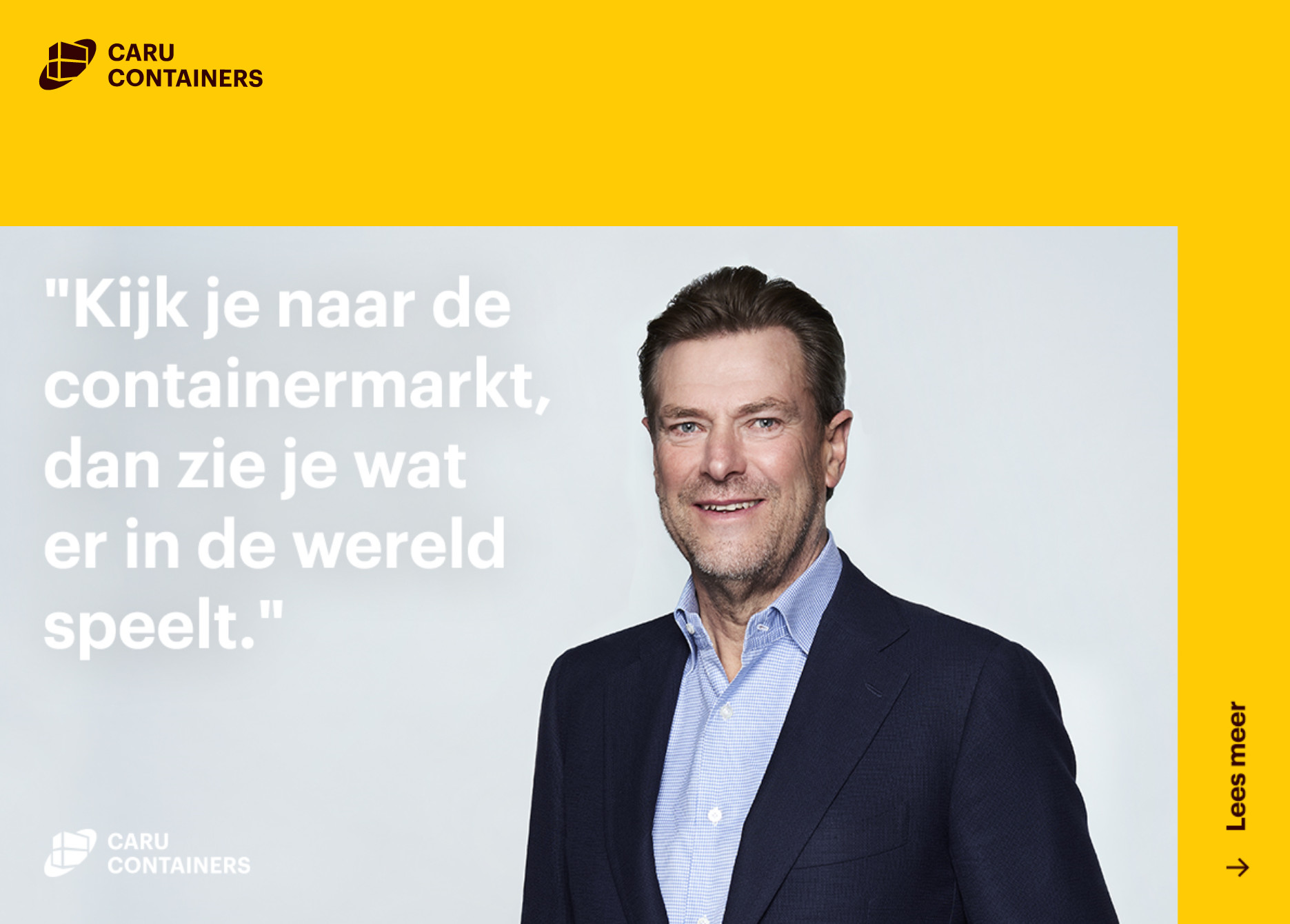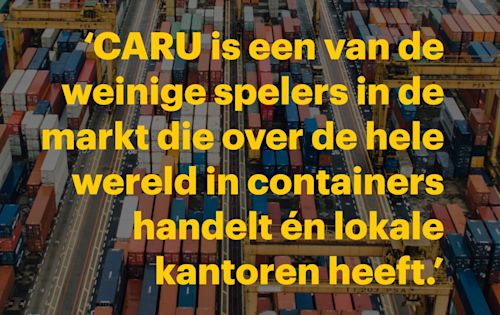Please select the country where you would like to receive containers.

Rob Tromp plans to keep innovating the container market with the help of youngsters
Founder and managing director of CARU Containers Rob Tromp (63) witnessed the development of the container market from the ‘wild west’ of the 1980s into a mature sector. His own company has developed with it. Here, the container man gives a detailed insight into CARU Containers, doing business, and his vision of the container market. ‘If the container was an adolescent 40 years ago, today it’s a middle-aged man. And it needs to make sure it doesn’t get too heavy and out of shape.’
‘I used to always be doing 250 kilometres per hour on the highway, in a manner of speaking. Now that I’m 63, I go for a stroll. It means I get to see much more.’ Rob Tromp, managing director and founder of CARU Containers, acknowledges that he’s in a more relaxed phase of his career now. And he’s loving every minute. But listening to him speak, there’s little sign of any slowing down. He still expounds on the container market with the same fervour and enthusiasm – and in the same broad Rotterdam accent. It’s a market he saw grow and mature in front of him, and he certainly played a part in that growth himself too.
What is it he finds so endlessly fascinating about containers? ‘If you look at the container market, you can see what’s going on in the world,’ he says. ‘A trade war? We’ll notice that in the container business. Major economic growth in a particular country? We’ll see that straight away. When I started dealing in containers in the 1980s, they were manufactured in Japan. Then production shifted to Taiwan. South Korea was next, and now China is the leading container producer. So containers themselves follow the path of economic growth. It’s fascinating to see.’

What has driven CARU’s relentless growth? ‘It’s our focus on quality’, says Rob, emphatically. ‘I always see room for improvement, so that’s what I’m always focusing on. We also place the container itself front and centre. The container is an extremely efficient product, so our service must be as well. In the past, you’d have container companies issuing huge repair bills for the containers they hired out. I don’t think that’s right, and we’ve never done that.’
Rob also firmly believes in the win-win principle: ‘You only get a good outcome if both parties benefit, otherwise it’s unsustainable. With one major supplier, for example, we sometimes take over large quantities of damaged containers and accept that we actually make a loss on that. We do this purely because it means they don’t have to deal with it and can focus on their primary business.
We also employed mechanics from a sub-contractor when that sub-contractor was having financial difficulties. That was actually a win-win-win: the mechanics were happy, the sub-contractor was happy, and we were happy. That’s the only way to build sustainable relationships. And it means you keep expanding your business.’
Middle-aged man
The wild west days of the container market are long gone. Nowadays, the market is professional and automated.
But according to Rob, little else has changed. ‘Yes, containers are being shipped to more and more places. There are some fantastic terminals in Africa now too. The ships and volumes have grown.’
But the container itself has barely changed in 63 years. The price, however, has dropped. ‘In the early 1990s you would pay $3,000 for a container, whereas last year a new container was $1,700.
That’s not something you see with many other products.’
Globally, container transport is still in the ascendant. There’s a lot of capacity and shipping is cheap. But that’s exactly where the challenge now lies for the market, according to Rob. ‘If the container was an adolescent 40 years ago, today it’s a middle-aged man. And it needs to make sure it doesn’t get too heavy and out of shape.’ Rob expects that more people will be voicing criticism of the CO2 emissions attributed to container ships.
He wonders how the container market – which is based on volumes and growth – will respond to that.
Tackling empty transports
These are the types of challenges that Rob is fully focused on with his own company. With CARU Containers, he is particularly focused on tackling empty transports. Once a container has delivered its cargo, it’s often carried back empty on the ship. As a result, about one-third of containers are transporting air. That’s a real thorn in Rob’s side. ‘It’s a total waste of energy and money.’
This is a global problem and there’s currently no solution that can fully address it. However, CARU is doing its bit by being smart in the way it handles containers that are approaching the end of their lifespan. Transport containers are typically phased out after about 14 years, but they can still function perfectly well as storage containers. In practice, when these old containers deliver their final load of cargo, they’re often transported once more to another harbour.























































